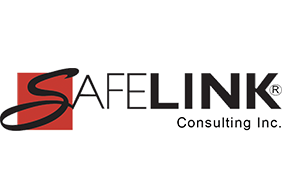The pandemic of the Coronavirus Disease 2019 (COVID-19) has created real challenges and uncertainties for businesses around the world. Needless to say, all of us at SafeLink Consulting have been responding to questions from our dentistry clients on what they should be doing in their practice to protect themselves, their patients and staff.
At a minimum the dental practice should be following guidance from their State Board, state government requirements, and Centers for Disease Control (CDC). Practices that are providing patient treatment must continue to follow Standard Precautions, which includes use of personal protective equipment, good hand hygiene, sharps safety, proper sterilization procedures, and disinfection of all items that could be contaminated with a dental patient’s body fluids. CDC Recommendations: Postpone Non-Urgent Dental Procedures, Surgeries, and Visits. This info is constantly being updated by the CDC so as new information is available be sure to check back often for new content. Get more resources.
When we look for specific guidance on how dental practices need to deal with risks associated with COVID-19, there are directives published by the CDC, ADA, and state health departments. The National Network for Oral Health Access (NNOHA) publishes information regarding the state by state recommendations for dental clinics. Dentists should review these directives in order to determine any limitations on patient treatment. CDC Healthcare Professionals FAQs
Learn more about managing your COVID-19 Safety Program
Preparing Practice for Change in Treatment Hours
If you have shortened your work week or are temporarily closing your practice, here are some suggestions for equipment and other items you may want to consider preparing for non-use:
- Autoclave - check with manufacturer's recommendations for preparing for inactivity (for Midmark equipment see information available online);
- Notify your spore culture testing lab that this testing will be on hold and document in your spore culture test results log the date that the unit became inactive;
- Vacuum pump and air compressor - follow the manufacturers' recommendations for preparing for inactivity;
- Waterlines - one of the waterline testing labs has provided some guidance as well as a dental office maintenance company;
- Amalgam separator should be inspected on last operational day and the final inspection indicated on the inspection log;
- Have all biohazard waste and sharps disposed of according to state hazardous waste laws;
- Disinfection and cleaning of treatment rooms, sterilization, and common areas - perform a thorough cleaning of these areas using a disinfectant referenced below. Ensure that full personal protective equipment is worn during this cleaning. If you have been using a log to sign off on daily disinfection, then indicate on the log the date the treatment room use was discontinued.
- Turn off, disconnect, and replace gas cylinder cap on oxygen and nitrous oxide cylinders; ensure cylinders are secured.
- Turn off emergency oxygen cylinders and store securely.
- Unplug equipment that can be unplugged and doesn’t need to have the electrical source when the office is unoccupied such as toaster ovens, microwaves, ultrasonic equipment, etc.
- Follow your state regulations regarding retention of controlled drugs so they are secured during this period.
Recommended Protocol for Waterline Maintenance If You're Suspending or Limiting Care
Dental Fix Protocol for DentaPure Cartridges
Disinfectants Effective Against COVID-19
For COMMERCIAL/HOSPITAL-LEVEL DISINFECTANTS: SafeLink has consulted with manufacturers of some of the most commonly used products in dental practices and dental labs for disinfecting. What we learned was that not all disinfectants are effective in inactivating the COVID-19 virus. We are not recommending any particular disinfectants to use since there are so many out there. It is best to contact the manufacturer of that product to confirm whether or not it is effective against COVID-19. Follow the manufacturer’s instructions for use for your particular application.
Disinfectants for use against SARS-CoV-2
For HOUSEHOLD DISINFECTANTS: EPA has published a list of common household disinfectants that can be used on potentially contaminated surfaces. This list is referenced above and may not include all disinfectants (continually updated). Use this EPA list to reference any common HOUSEHOLD disinfectant products you may be using in your office or home. Disinfectants must meet the criteria published by the EPA in the document titled, "GUIDANCE TO REGISTRANTS: PROCESS FOR MAKING CLAIMS AGAINST EMERGING VIRAL PATHOGENS NOT ON EPA-REGISTERED DISINFECTANT LABELS", to claim effectiveness against this new virus.
Infectious Disease Preparedness & Response Plan for Dental
Dental Practice Staff Safety - Employee Protection
OSHA directs your business to first use engineering controls, then work practice and administrative controls prior to the use of personal protective equipment (PPE). Review this information on the OSHA website for healthcare workers to determine if any of those controls are possible in your practices that will provide protection when PPE is not available.
How to Achieve Dental OSHA Compliance for your Practice
For healthcare workers who are treating patients known to be infected with COVID-19, the CDC recommends use of the N95 respirator as a face mask. Also protect your eyes, wear gloves, and gown. CDC recommends only use of disposable gowns rather than washing them. Washing your hands is critical to practicing standard precautions. Practicing Universal or Standard Precautions includes:
- frequent hand washing,
- decontamination of critical, semi-critical, and non-critical items and surfaces,
- wearing PPE - eye protection, mask, gloves, and gown, and
- sharps safety.
COVID-19 and OSHA Guidance on N95 Respirators
Understanding the Difference - Surgical Mask and N95 Respirator
We know that it is difficult to obtain disposable face masks, hand sanitizers, and disinfectants right now so look for alternatives such as autoclavable items. Also, if you begin requiring an N95 respirator, then your health and safety Program must include a Respiratory Protection Program. If your business is using SafeLink's Cloud-based health and safety manual then you already have that program. When respiratory protection is mandatory, you’ll need to perform fit testing and have medical questionnaires completed for employees who are required to wear them. That medical questionnaire must be submitted to a healthcare professional for review to determine if it is medically ok for the employee to wear a respirator. OSHA has issued a Temporary Enforcement Guidance - Healthcare Respiratory Protection Annual Fit-Testing for N95 Filtering Facepieces During the COVID-19 Outbreak. This Memorandum states that annual fit-testing of the respirator is not required under the current circumstances, however, initial fit-testing is required. Contact us for further guidance on these requirements.
Infection Prevention Coordinator's Responsibilities for the Dental Practice
Patient Screening
If you determine that patient screening needs to be implemented, then consider screening patients when they call in for an appointment as well as when patients arrive for a scheduled appointment. Below are suggested screening questions. If the patient answers "yes" to any of these questions, then you should defer treatment until the patient has been examined by a medical professional. Notify your Public Health Department for guidance.
Do you have:
1) Fever or history of fever AND acute respiratory infection (shortness of breath or cough or sore throat) or severe acute respiratory infection without fever requiring hospitalization; or
2) Close contact within 14 days of symptom onset with any of the following:
• a confirmed or suspected case of COVID-2019;
• a healthcare facility in China or any of the countries that have confirmed COVID-19 cases.
If you are not equipped to provide emergency dental care, then refer them to the Public Health Department. Have that phone number available to provide to them. Notify your Public Health Department for guidance.
Daily decontamination of waiting room furniture and furnishings is advisable.
Staff Training
If you plan to do training for your dentists and staff, it is recommended that you use OSHA's information published on protection of workers from the coronavirus along with information from the Centers for Disease Control. Stress the need to continue to practice Standard Precautions. Get virtual safety training & assessment.
Why is assessing compliance so vital and how often do I need to train my staff?
Infected Persons
Because this particular strain of Coronavirus is new, the Centers for Disease Control (CDC) is still learning about the epidemiology of the virus, including modes of transmission and length of time the virus is viable outside of the body. This information regarding symptoms to watch for is available on the CDC website.
The initial concern was with people who had traveled to other countries, however, now there is concern regarding travel between states and especially in those states where COVID-19 is more prevalent. The people most susceptible to the virus still seem to be the elderly, immuno-compromised, have other medical issues such as lung disease and other types of cancer, liver disease, kidney disease, and people with pneumonia. This virus has infected people of all ages so everyone must adhere to the guidelines being established by CDC and their individual state governments. A person who has contact with an infected person can transmit the virus to someone else so social distancing is important. There are even concerns now regarding asymptomatic people spreading this virus, but it is an active area of investigation. The CDC also stated that currently it should be treated as viral pneumonia. Unfortunately, no one drug has been shown to be the answer for treatment, however, various drugs are being tested.
Patients Under Investigation (PUI) have shown the following symptoms:
- Fever
- Lower respiratory condition
- Coughing
- Shortness of breath
Not all infected persons have fever at onset but may have fatigue, diarrhea, headache, sore throat.
Employees who meet any of the Epidemiologic Risks should notify their employer and consult with their personal physician regarding treatment. The Criteria for Return to Work for Healthcare Personnel with Confirmed or Suspected COVID-19 (Interim Guidance should be followed for your employees who want to return to work after being infected with COVID-19.
Disclaimer: This is not legal advice. Prior to implementing any policies regarding the above steps for employee and/or patient protection, you should seek legal advice from your attorneys on any employment and labor law issues that will be raised by concerns about COVID-2019.
Managing COVID-19 Infection Control for Your Dental Practice
Contact SafeLink Consulting to get help with staff and patient safety.
Managing Risks of the Coronavirus in the Dental Laboratory Setting
Top Five Safety Compliance Issues All Businesses Should Know
Learn more about what SafeLink Consulting can do to help your business with compliance services, including safety compliance, to meet OSHA training requirements and quality system consulting to meet FDA compliance. SafeLink Consulting assists businesses with workplace safety training, infection control training, HIPAA training online, quality systems, assessments, audits, due diligence, and more.
Industries include:
Dentistry compliance - assisting the dental practice with meeting requirements for OSHA, HIPAA, EPA, and CDC guidelines, patient safety and employee health & safety
Dental Laboratory compliance - assisting the dental lab with meeting requirements for OSHA, FDA, and CDC guidelines, employee health & safety, plus FDA requirements for lab manufacturing custom implant abutment /gmp for medical device manufacturers
Medical Device Manufacturers compliance - assisting with meeting OSHA compliance & FDA requirements, GMP - good manufacturing practices
General Industry compliance - assisting with OSHA compliance and FDA compliance as it pertains to the specific business
Beverage Industry compliance - assisting beverage businesses such as the craft brewery, winery, cidery, distillery, vintner with meeting OSHA compliance, health & safety, FDA requirements / GMP - Good Manufacturing Practices.
Get notification when new regulatory compliance training courses are added plus upcoming events by subscribing to our email news.









Leave Comment